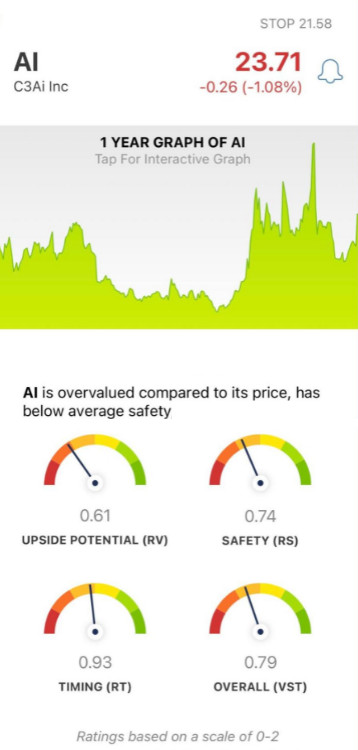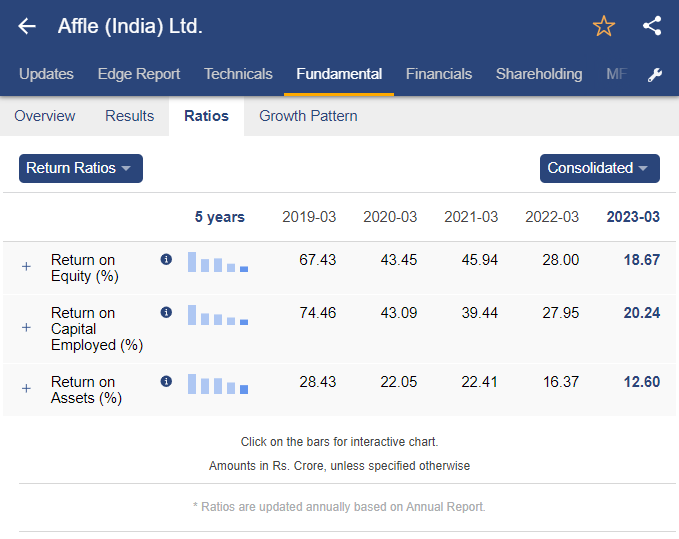20 Top Ways For Choosing Best Stock Analysis Website Websites
20 Top Ways For Choosing Best Stock Analysis Website Websites
Blog Article
Top 10 Tips For Looking At The Cost And Pricing For Ai Stock Predicting/Analyzing Platforms
The price and cost of AI-based stock forecasting and analyzing trade platforms are important in order to avoid unanticipated costs or hidden fees. Prices can be very different, so it's important to know the value you get for your money. Here are ten top strategies to help you assess the cost and price of these platforms.
1. Learn Pricing Model
Subscription: Be sure to verify if a platform has a fee per month or year and what's included in each level.
Pay-per-use: Verify whether the platform charges you based on the usage (e.g. the amount of trades, data requests or even predictions).
Freemium model - Find out whether there's a no-cost version with a limited number of features, and a premium version that includes the best features.
2. Compare Pricing Tiers
Compare features in each pricing level (e.g. professional, basic).
Scalability. You must ensure that you are getting the best price to meet your requirements.
Upgrade flexibility: See if it is possible to upgrade or downgrade your plan when you alter your needs.
3. Evaluate Hidden Costs
Data fees: Make sure to check for any additional fees for data that is premium (e.g. real-time data or advanced analytics).
Brokerage costs Check if the platform has additional charges for trading or connect with brokers.
API usage: Determine if you will be charged additional fees for frequent API use or API access.
4. Demos and Free Trials
Trial period. Find platforms that offer the option of a demo or trial to let you try their features out before committing.
Check the limitations on the free trial. It might not contain all the features.
If the program is not right for you, make sure you have the option to remove the trial.
5. Check for Discounts & Promotions
Discounts for annual subscriptions: Find out if your platform offers discounts on subscriptions that are paid annually, compared with plans billed monthly.
Referral Programs Check whether your platform provides discounts or credits for users who refer others.
Pricing for institutions If you're part of a larger organization, inquire about bulk or institutional pricing.
6. ROI (Return on Investment) How can you assess the return?
Cost in relation to. value: Assess whether the capabilities and forecasts offered by the platform are worth the price. Do you have time saved or make better decisions in trading?
Study the platform's and user reviews to calculate its potential return on investment.
Alternative costs: Compare platform cost against the costs of not using the platform (e.g. missed opportunities, time spent manual analysis).
Review the Cancellation Policy and Refund Policy
Cancellation Terms: You may cancel without hidden charges or penalties.
Review the policy on refunds to determine whether you are eligible for a refund for any unredeemed subscription portion.
Auto-renewal. Find out if the platform automatically renews your account. If so, you'll need to know how to unsubscribe.
8. Pricing Transparency:
Clare pricing: Make sure that the pricing of the platform is clearly stated and has no hidden charges.
Customer Support: Contact customer service for clarification on any pricing information that is unclear or extra charges.
Terms of the contract: Make sure you understand the service terms and any penalties.
9. Compare to Competitors
Features comparison: Compare the pricing and features offered by the platform against its rivals to make sure you're getting the best deal.
User reviews: Check out user feedback on the platform and determine whether it's worth it.
Market positioning: Find out if the platform is priced as premium, mid-tier or a budget choice and if it aligns with your expectations.
10. Calculate Long-Term Costs
Price increases Look through the platform's history to see the frequency of raising prices.
Feature additions - Determine whether new features come with your current plan or if an upgrade is necessary.
Costs for Scalability: Ensure the platform's pricing is fair when your trading activity or needs for data expand.
Bonus Tips
Test different platforms. Compare the effectiveness and performance of various platforms by testing them during free trials.
Negotiate your pricing. If you're a part or a larger institution or if you use this product in huge quantities, ask about custom pricing.
There are many platforms offering educational tools and resources for no cost.
Use these guidelines to evaluate the costs and prices for AI platform for analyzing and predicting stocks. Pick one that best meets your needs and fits within your budget. A balanced platform will provide you with the best of both worlds in terms of affordability and functional. Read the best ai investment advisor tips for website recommendations including ai for stock trading, best ai stock trading bot free, ai invest, ai based trading platform, best artificial intelligence stocks, best stock advisor, stock analysis tool, ai investing, trader ai review, stock ai and more.
Top 10 Tips For How To Evaluate The Scalability Ai Trading Platforms
To ensure that AI-driven stock trading and prediction platforms can be scaled as well, they should be able to cope with the growing amount of data and the complexity in markets, in addition to customer demands. These are the top 10 ways to determine the capacity of these platforms.
1. Evaluate Data Handling Capacity
Tips: Make sure the platform is able to process and analyze large datasets (e.g., historic stock data, live market feeds, or other data sources like news and social media).
Why: Scalable platforms must handle increasing data volumes without performance degradation.
2. Test Real-Time Processing Capabilities
Find out how the platform handles live streams of data, including news and stock prices.
The reason: The immediate analysis of your trading decisions is essential because delays could lead to you missing out on opportunities.
3. Cloud Infrastructure Elasticity and Check
Tips. Find out if the platform utilizes cloud-based infrastructure like AWS, Google Cloud and Azure, which can expand resources according to demand.
The reason: Cloud platforms are elastic and they can be scaled up and down based on demand.
4. Assess Algorithm Efficiency
Tips: Examine the computational efficiency of the AI models (e.g., deep learning or reinforcement learning, etc.)) used for predictions.
Why: Complex algorithmic structures can be resource-intensive. Optimizing them is the most effective way to scale.
5. Investigate the parallel Processing and Distributed Computing
TIP: Check if the platform uses parallel processing or distributed computing frameworks.
Why: These technologies accelerate data processing and analysis on many nodes.
Examine API Integration, and Interoperability
Tip: Check the integration of the platform to external APIs.
Why? Seamless integration allows the platform to be adapted to the changing environment of trading and data sources.
7. Analyze User Load Handling
You can simulate the high users and see how the platform reacts.
The reason: A platform that is scalable should maintain performance even as the amount of users increase.
8. Review the model of Retraining and its Adaptability
Tips: Find out how frequently and effectively the AI models are trained with new data.
Why: Models must constantly change to keep up with the ever-changing market to ensure that they remain precise.
9. Check Fault Tolerance (Fault Tolerance) and Redundancy
Tip: Make sure the platform is equipped with failover mechanisms to deal with software or hardware malfunctions.
The reason: Since downtime is costly when trading and trading, fault tolerance is essential for scalability.
10. Monitor Cost Efficiency
Tips: Calculate the costs of expanding your platform. Incorporate cloud resources, data storage, and computational power.
What is the reason? Scalability shouldn't be at the cost of unsustainable costs. It is therefore important to strike a balance between cost and performance.
Bonus tip Future-proofing
Make sure the platform can be able to adapt to changes in regulation and incorporates emerging technologies, like quantum computing, or even advanced NLP.
Focusing on these aspects will help you evaluate the scale of AI stock prediction and trading platform and ensure that they are sturdy, efficient and capable of sustaining future expansion. View the recommended ai hedge fund outperforms market hints for more examples including using ai to trade stocks, trader ai review, trading ai, ai trader, ai investment platform, ai copyright trading bot, incite ai, ai based trading platform, free ai trading bot, trading with ai and more.